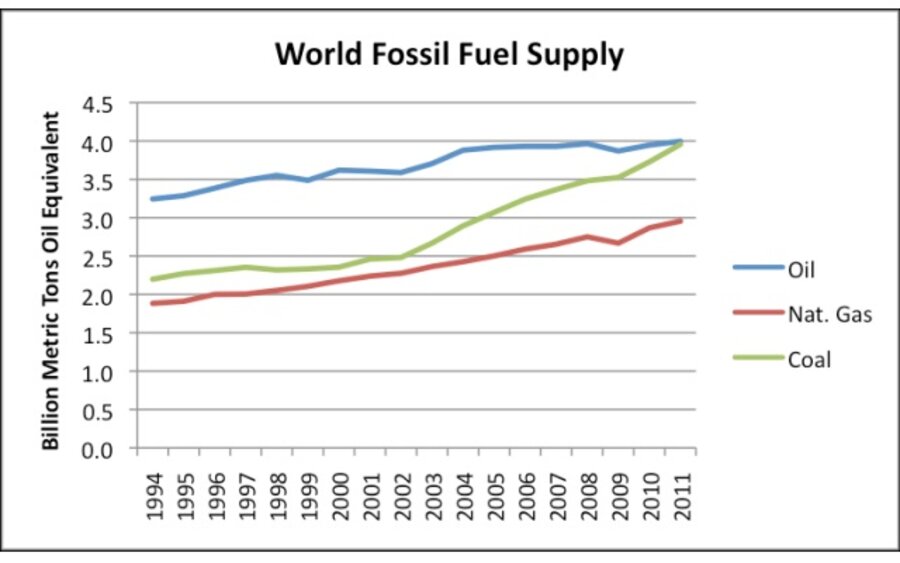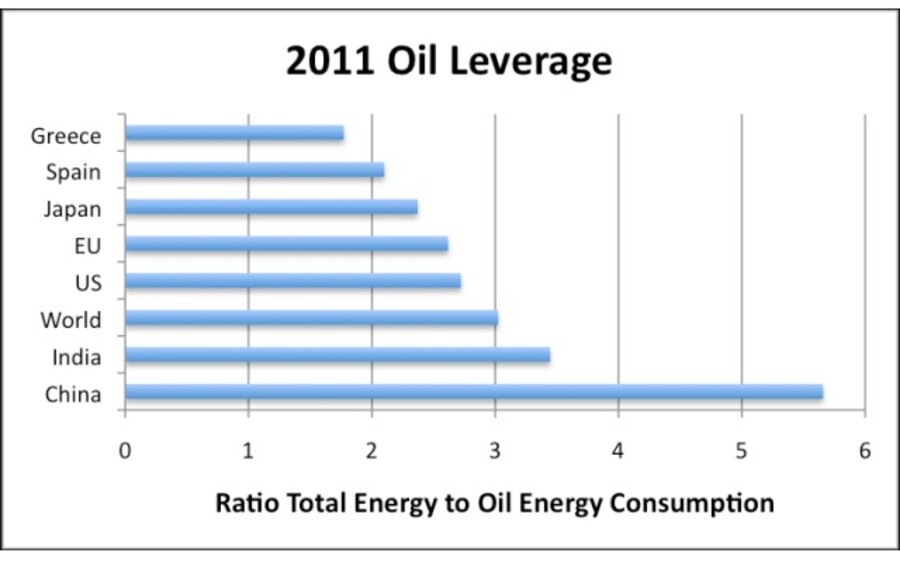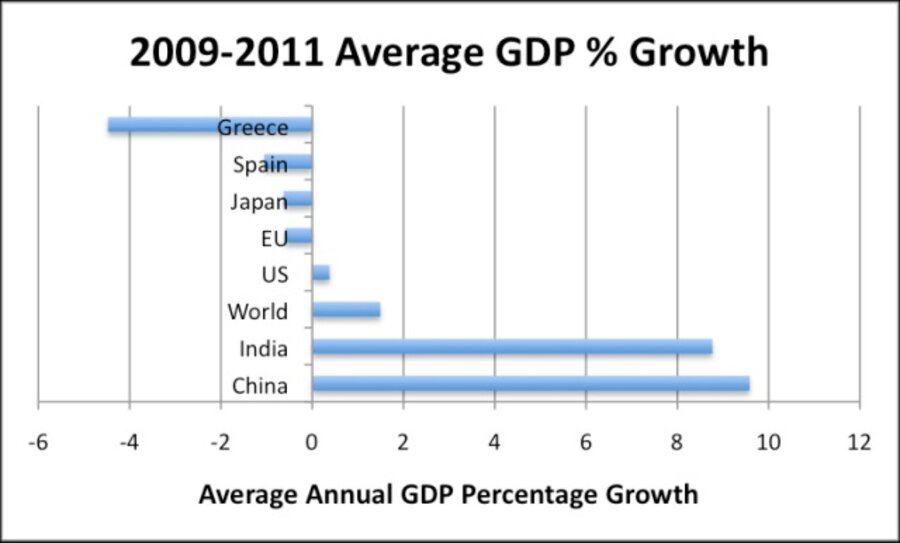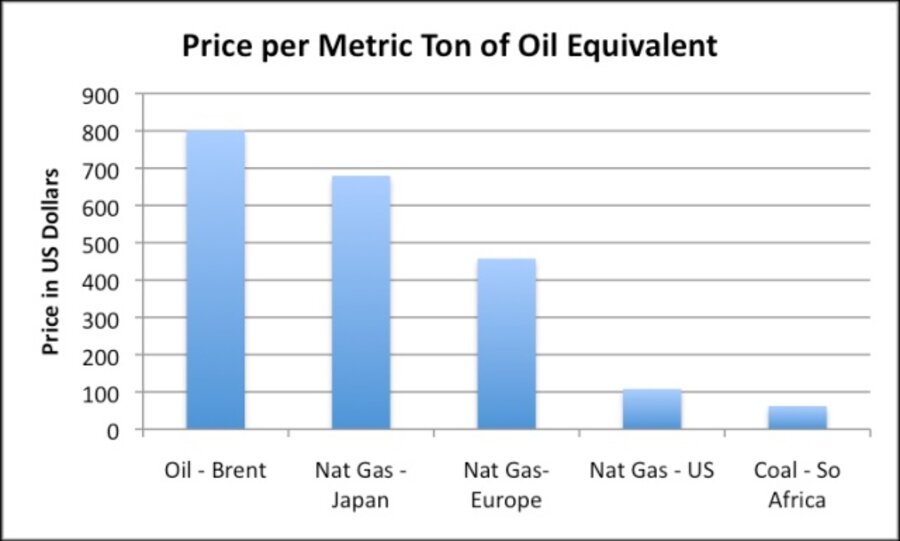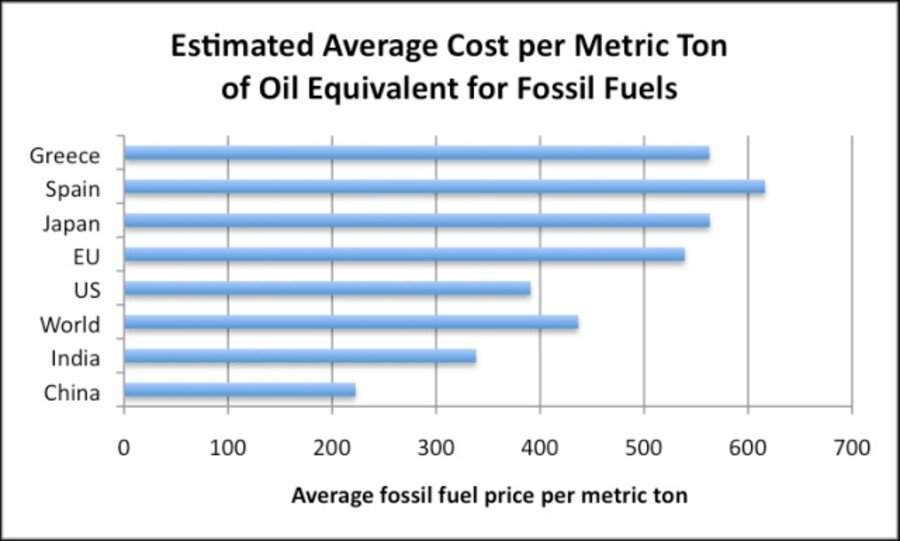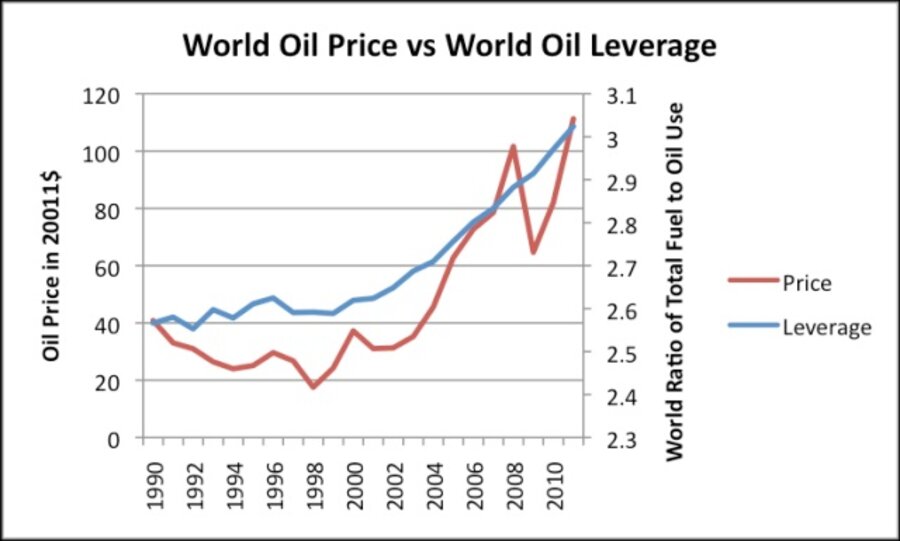Why is world using more coal? The China trade.
A primary reason why coal consumption is rising is because of increased international trade, starting when the World Trade Organization was formed in 1995, and greatly ramping up when China was added in December 2001. Figure 1 shows world fossil fuel extraction for the three fossil fuels. A person can see a sharp “bend” in the coal line, immediately after China was added to the World Trade Organization (see Figure 1, above). China’s data also shows a sharp increase in coal use at that time.
China and many other Asian countries had not previously industrialized. The advent of international trade gave them opportunities to make and sell goods below the cost of other countries. In order to do this, they needed fuel, however. The fuel the West had used when it industrialized was coal. Coal had many advantages for a newly industrialized countries: it often can be extracted without advanced technology; it is relatively cheap to extract; and it is often available locally. It can be used to make many of the basic items used by industrialized countries, including steel, concrete, and electricity.
The industrialization of Asian countries was pushed along by many forces. Companies in the West were eager to have a way to make goods cheaper. Buyers were happy with lower prices. Even the Kyoto Protocol tended to push international trade along. This document made it clear that countries signing the document wouldn’t be in the market for coal. From the point of the developing countries, this would help hold coal prices down (at least in the export market). It also likely meant a better long-term supply of coal for developing countries. The Kyoto Protocol offered no penalties for exporting products made with coal, so it put countries that used coal to make products for export in a better competitive position. This was especially the case if Kyoto Protocol countries used carbon taxes to make their own products higher priced.
Apart from the international trade/industrialization issue, there is another issue that is helping to keep coal consumption rising. It is the fact that oil supply is in short supply and high priced, and this means that economies of countries that disproportionately use a lot of oil in their economies are at a competitive disadvantage. Countries coming “late to the party” are in a good position to develop their economies using little oil and much coal, and thus keep overall energy costs down. This approach gives the developing countries a competitive advantage over the developed countries.
Let’s look at a few graphs. In terms of oil leverage (total energy consumed /oil energy consumed), China and India come out way ahead of several other selected country groups. They do this with their heavy use of coal (click on Figure 2, above left).
Based on Figure 3 (see above left), the GDP of countries with a lot of coal in their mix seems to grow more quickly than other countries.
In recent years, oil has been the most expensive of fossil fuels. Thus, a country that uses mostly oil will, on average, have higher energy costs than a country that can dilute out its oil use with the use of cheaper fuels.
Figure 4 (above, left) shows average oil, natural gas, and coal prices for some representative categories of these fuels.
Among the types of fuels shown, oil is the highest-priced. The coal price is much lower, especially if it is locally produced. If it is transported long-distance, the cost of transport will add to its price. Natural gas prices vary around the world, but tend to be between coal and oil prices.1 It is not possible to know exactly what the average fuel price of each country group shown on Figure 2 and 3 is, but we can make a rough approximation using the average prices shown in Figure 4. Such an approximation is shown in Figure 5 (above, left).
A person can see from Figure 5 that the average cost of fossil fuel energy is higher for the countries at the top of the chart, and lower for those near the bottom of the chart. There are various adjustments that might be made, such as adding the effect of carbon taxes on fossil fuel to the costs for European countries, and adjusting for the low value of the Euro recently. Both of these would tend to raise the average cost of fossil fuels for European countries.
Also, the world average fuel cost is probably overstated in Figure 5. In my list of country groups analyzed, I purposely excluded major oil exporters, such as Saudi Arabia, since these can be expected to behave differently than other countries. Quite a few of these exporters can afford to subsidize oil costs for their own people and for manufacturing within their countries, because their actual oil extraction costs are lower than the world oil price. If we were to adjust for this, the world average fuel price in Figure 5 would probably be reduced.
The Figure 5 averages include only fossil fuels (coal, oil, and natural gas), and exclude other fuels such as nuclear, hydroelectric, wind, and solar PV. Fossil fuels represent 92%-93% of energy supply in China and India, based on BP Statistical Review of World Energy data. In Europe, fossil fuels represent 79% of total fuels; in the US and Japan, they represent 86% to 87% of the total.
A Look at How Fuel Consumption Is Actually Changing
Oil consumption is decreasing in the countries with relatively slow GDP growth, and increasing in India and China (click on Figure 6, above left).
I would interpret this to mean that as the weaker economies (which tend to use a higher proportion of oil in their energy mix) are priced out of the market, more of the oil is going to the countries that can leverage its use better. Unfortunately, a barrel of oil saved by Europe, the US, or Japan, means another barrel that can stay on the world market and be used by China, India, and other developing countries with better leveraging.
A barrel used in the developed world would “only” be leveraged up by other fuels by roughly a factor of 2.0 to 2.75, and some of this leveraging would be hydroelectric or nuclear electric, which is fairly benign from a carbon dioxide point of view. If that same barrel of oil is instead used by China, it can be leveraged up by a factor of 5.7. Thus a barrel of oil saved by the developed world can be transferred to China and used to greater positive effect, from the point of view of producing cheap consumer products and a greater negative impact, from the point of view of CO2 impact.
What did Economists Miss?
Unfortunately, the list is rather long.
1. The most basic issue economist missed is that energy is required to make goods and services. If production of a product is transferred to another country, that country will need energy supplies – probably cheap, easy to extract, energy supplies – to make that product. It doesn’t make much sense to look at fossil fuel consumption, stopping at a country’s own borders. If we want products to be made in an environmentally sound way, and we want our own citizens to be employed, we need to make them at home, and figure out a better way of counting CO2 production.
2. World oil supply is constrained. This means that even with additional demand, oil supply can’t rise very much. Additional demand doesn’t do much more than raise price. A reduction of demand, within a range, simply reduces price, without really reducing production. Beyond a point, a reduction in demand does temporarily reduce both price and production, as it did in 2008. But demand is likely to quickly bounce back, leading to another price spike, and further constrained supply. Standard economic models seem to assume this situation can’t exist.
3. In a situation of constrained oil supply, if a country reduces its oil consumption, it doesn’t mean that more oil will be left in the ground. Instead, the oil saved goes back on the world oil market (perhaps at a slightly lower price) and is bought by someone else who can make better use of it.
4. The mix of types of energy used by a country changes very gradually over time, because it is very difficult to substitute one kind of fuel for another without significant investment (for example, modifying cars to use natural gas and building pipelines for the natural gas). In general, for the short term, the mix is fixed. For example, in Figure 7 (above left), the world oil leverage remained constant in the period prior to 2000. It then gradually increased, as oil prices rose. There was no big change when the 2008-2009 recession hit. A drop in oil consumption tended to lead to a drop in electricity consumption as well, and a drop in fuel use of all kinds.
I have written about this issue in my post, How Is an Oil Shortage Like a Missing Cup of Flour? In that post, I pointed out that to the extent proportions are fixed by built infrastructure, if there is a shortage (or excessively high price) of one necessary input (oil in the case of the economy; flour in the case of a batch of cookies), it is necessary to make a smaller batch. In the case of an economy, a smaller batch looks like a recession, with lower oil use, lower electricity use, and lower employment. This same pattern of all three types of fuel use dropping simultaneously can also be seen when viewing recent changes in world oil, coal, and natural gas supply, in Figure 1 at the top of this post.
5. If an economy such as China is not growing as fast as it might otherwise grow because of constrained oil supply, the availability of additional oil on the market because of the Developed Countries cutting back in their use may help China’s economy grow. In fact, China is likely to be able to use the additional oil (as for truck transport) to make it possible to make more goods using coal. Thus, the savings in oil may theoretically lead to increase in coal consumption, on a world basis.
6. The statement is often made that once oil prices rise high enough, renewables will become competitive. This statement is made with blinders on, in a world market for goods and services. What matters in a world market is the lowest total cost of production. Most renewables aren’t even oil substitutes; they are coal or natural gas substitutes, and these are cheaper. Anything that raises the average energy cost of a country relative to other countries makes it less competitive. When a country less competitive, it tends to use less oil. The extra oil tends to go to a more competitive country, and may help raise coal usage. Obviously wages make a difference, too, but a country that uses cheap fuels can pay their workers less, and still provide an acceptable standard of living.
7. There are two ways of reducing fossil fuel use that might be effective, but probably would not be well received. One is to cut back on international trade, perhaps by reintroducing taxes on trade. This would reduce fossil fuel usage, because many goods cannot be made without imported raw materials from elsewhere. Another method that would work is to tax (or forbid) fossil fuel extraction in your own country. This would make your country poorer, and less able to buy imports (such as oil and gas) on the world market.
8. I talked about what seems to be the effect of China’s competition on US jobs in another post. It would have been good if economists had foreseen this kind of impact before wholeheartedly endorsing the expansion of world trade.
9. It has recently been pointed out to me by a reader that the way China’s economy works, businesses can earn a lower rate of return than Western countries, and still provide an acceptable profit level, given the way Chinese government interacts with businesses. This gives China another competitive advantage, besides low fuel prices and low wages. See Rise of the FerroDollar.
Note:
[1] In the United States, natural gas prices are currently below the cost of production for many producers because of oversupply. This is not a sustainable situation; one possibility is that some natural gas producers will leave the market, US natural gas supply will drop with fewer producers, and US prices will rise.



